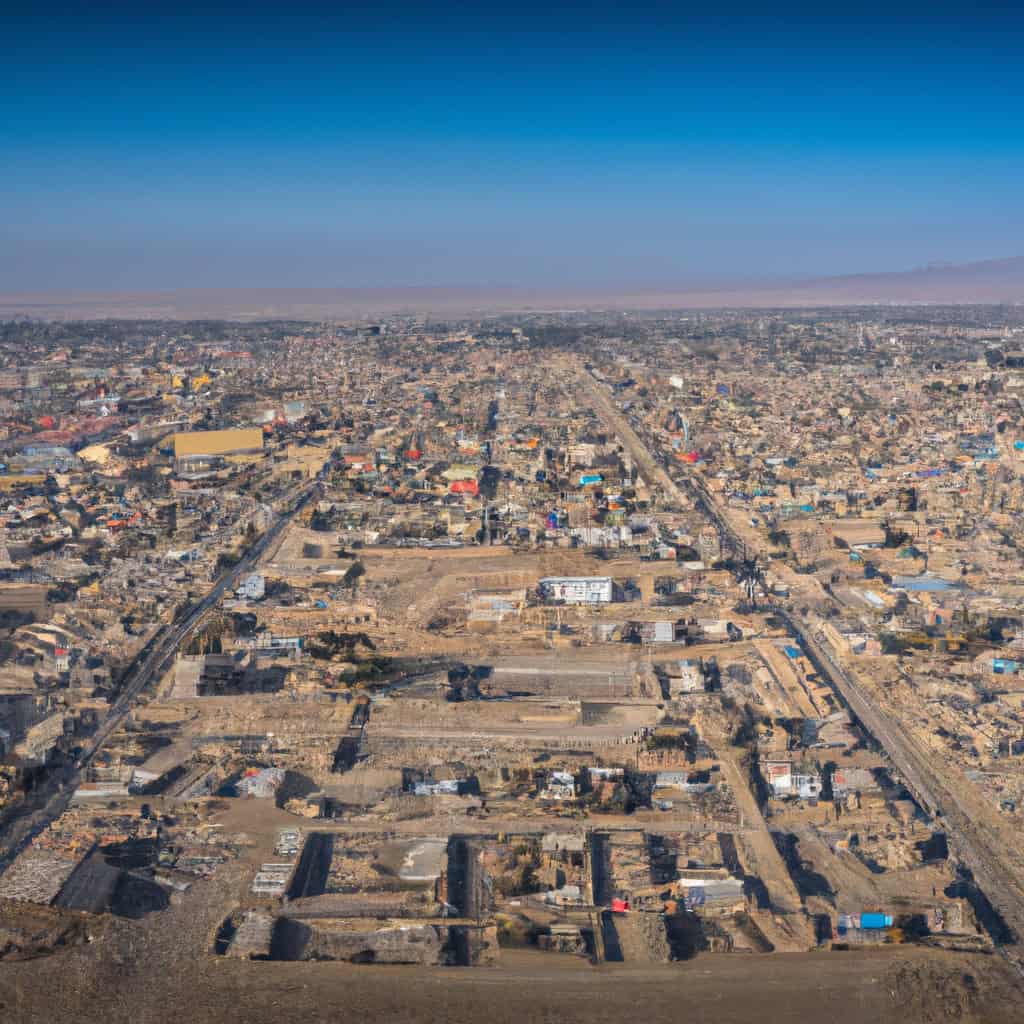Chilzina Complex in Kandahar City, is one of many fascinating sites that both foreign visitors and local tourists can explore while they visit Afghanistan and exploring Kandahar Province. Built right into the rocky mountainside, the complex stands as the testament to the region’s rich history and heritage. With its 40-window pathway, the Chilzina Complex not only provides a glimpse into the past, but also offers a spectacular view of the Kandahar city below – a sight that never fails to captivate its visitors.
Chilzina Complex Most Important Events
- Construction of the Complex: The most impactful historical moment at Chilzina Complex was undoubtedly its construction. It’s believed to have been built in the 2nd century AD when Buddhist influence was strong in the area.
- Invasion by the Ghaznavids: Another major event that shaped its history is the invasion by the Ghaznavid dynasty in the 10th century. This era saw the decline of the Buddist influence and the rise of Islamic culture.
- Exploration by Sir Alexander Burnes: A significant development that added to its legacy was the exploration by British explorer Sir Alexander Burnes in the 19th century. His writings opened up the complex to the western world.
History of Chilzina Complex in Kandahar City
The Chilzina Complex dates back to the Kushan Dynasty in the 2nd century AD when Buddhism swept across Afghanistan. Originally serving as a Buddhist monastery, the complex later underwent significant transformations throughout various stages of Afghan history. An inscription at the site marks the visit of a Kushan King, establishing its significance during this period.
The Ghaznavid invasion during the 10th century marked the decline of Buddhism and the rise of Islam in the region. The Chilzina Complex, like many other historical sites, was influenced by these changes, witnessing many transformations. The 40-windowed grotto became a place for spiritual contemplation for the Islamic Sufi travelers.
In the 19th century, Sir Alexander Burnes, a British explorer brought the complex to the western world’s attention through his writings. Since then, the Chilzina Complex has been attracting scholars, tourists, and history enthusiasts from around the world.
Why It’s Important to Afghan History
The Chilzina Complex plays a vital role in Afghan history as it mirrors the country’s cultural transformation. Its origins as a Buddhist monastery, transition into an Islamic spiritual retreat, and then a point of interest for western scholars, show how Afghanistan has been a confluence of various cultures and religions.
Additionally, in terms of architectural history, the Chilzina Complex also stands apart due to its unique 40-window grotto. It offers a tangible connection to the powerful Kushan Dynasty, a notable time period in Afghan history. Therefore, understanding the Chilzina Complex helps us comprehend Afghanistan’s layered history.
Why to Visit Chilzina Complex
Visiting the Chilzina Complex offers a unique journey through time. Its 40-windowed grotto not only exhibits architectural brilliance but also offers a panoramic view of Kandar city. The carvings and inscription inside the grotto provide insight into Afghanistan’s historical journey, making it a must-visit spot for history enthusiasts.
Moreover, the location of the complex in the mountain side enriches your experience as it pairs history with the serenity of nature, creating a scenic setting.
- The 40-window grotto offering panoramic views of Kandahar
- Tranquility of the surroundings
- Historic inscriptions and carvings
- Architectural brilliance of the Kushan era
- The trek up the mountain enhancing the travel experience
The complex is located on the outskirts of Kandahar and is easily accessible by car or public bus. The best time to visit is during spring when the temperatures are moderate.
Cultural & Tourist Significance
The Chilzina Complex holds immense cultural significance due to the interaction of diverse religious influences. Besides being a physical embodiment of local history and culture, the complex allows visitors to experience Afghanistan beyond stereotypes and misconceptions.
As a tourist site, the Chilzina Complex caters to history lovers and adventurers alike. Hiking up the mountainside to reach the grotto makes for an exciting adventure, while the rich history engrained into the walls appeals to history enthusiasts.
Moreover, the Chilzina Complex has the potential to boost local tourism by attracting international audiences. Its unique architecture and historic significance set it apart from other tourist sites, adding value to the overall tourist experience in Afghanistan.
Interesting Facts
While the Chilzina Complex is known for its grotto and historic significance, there are a few lesser-known facts. First, the name “Chilzina” translates to “Forty Steps” referring to its unique design.
Second, local legends claim that Ali, the son-in-law of the Prophet Mohammed, once prayed at this site. This makes the complex a religious attraction for the local community as well.
Third, the famous inscription inside the grotto identifies that a high-ranking Kushan king visited the site, but till today, it’s undeciphered as to exactly who that king was.
With its vast history, cultural significance, and breathtaking views, the Chilzina Complex is, without a doubt, a gem of Kandahar city that deserves a place in everyone’s travel itinerary. So, if you’re looking for a unique travel experience that combines history, adventure, and great views, make sure to add Chilzina Complex to your must-visit list when you plan your trip to Afghanistan.

